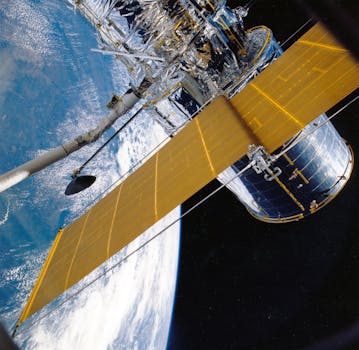
Updates from Above: Essential Insights into the Latest in Satellite Telecommunications
Satellite Telecommunications has revolutionized the way we communicate, navigate, and access information. With the latest advancements in satellite technology, services, and applications, it’s essential to stay updated on the current state of the industry. In this article, we’ll delve into the latest developments in satellite telecommunications, exploring the innovations, trends, and future directions of this rapidly evolving field.
Introduction to Satellite Telecommunications
Satellite telecommunications involves the use of artificial satellites to transmit and receive signals, providing a wide range of services such as television broadcasting, telecommunications, navigation, and weather forecasting. The industry has experienced significant growth over the years, driven by advances in technology, increasing demand for mobile and wireless connectivity, and the need for global coverage and accessibility.
Latest Advancements in Satellite Technology
Recent years have seen significant advancements in satellite technology, including the development of more efficient and powerful satellites, improved propulsion systems, and enhanced signal processing capabilities. Some of the key innovations include the use of high-throughput satellites, which offer increased bandwidth and faster data speeds, and the introduction of small satellites, which provide a cost-effective and flexible solution for a range of applications.
Another significant development is the emergence of satellite constellations, which involve the deployment of multiple satellites in low Earth orbit to provide global coverage and connectivity. Companies such as SpaceX, OneWeb, and Amazon’s Kuiper Systems are leading the charge in this area, with plans to launch thousands of satellites in the coming years.
Applications and Services
Satellite telecommunications supports a wide range of applications and services, including broadband internet access, mobile connectivity, navigation, and weather forecasting. The industry is also exploring new opportunities in areas such as Internet of Things (IoT), 5G networks, and space exploration.
In addition, satellite telecommunications plays a critical role in disaster response and recovery, providing emergency communications and connectivity in the aftermath of natural disasters and other crises. The industry is also working to address the issue of global connectivity, with initiatives such as the Internet for All campaign aiming to bring broadband access to underserved communities around the world.
Future Directions and Challenges
As the satellite telecommunications industry continues to evolve, it’s likely to face a range of challenges and opportunities. Some of the key trends and developments to watch include the growth of satellite constellations, the adoption of 5G networks, and the increasing importance of cybersecurity.
However, the industry must also address issues such as spectrum management, regulatory frameworks, and environmental sustainability. The proliferation of satellites in Earth’s orbit raises concerns about space debris and the potential for collisions, highlighting the need for responsible and sustainable practices in the industry.
In conclusion, the latest updates in satellite telecommunications offer a glimpse into a rapidly evolving industry, driven by innovation, demand, and the need for global connectivity. As we look to the future, it’s essential to stay informed about the latest developments, trends, and challenges in this exciting and dynamic field.

